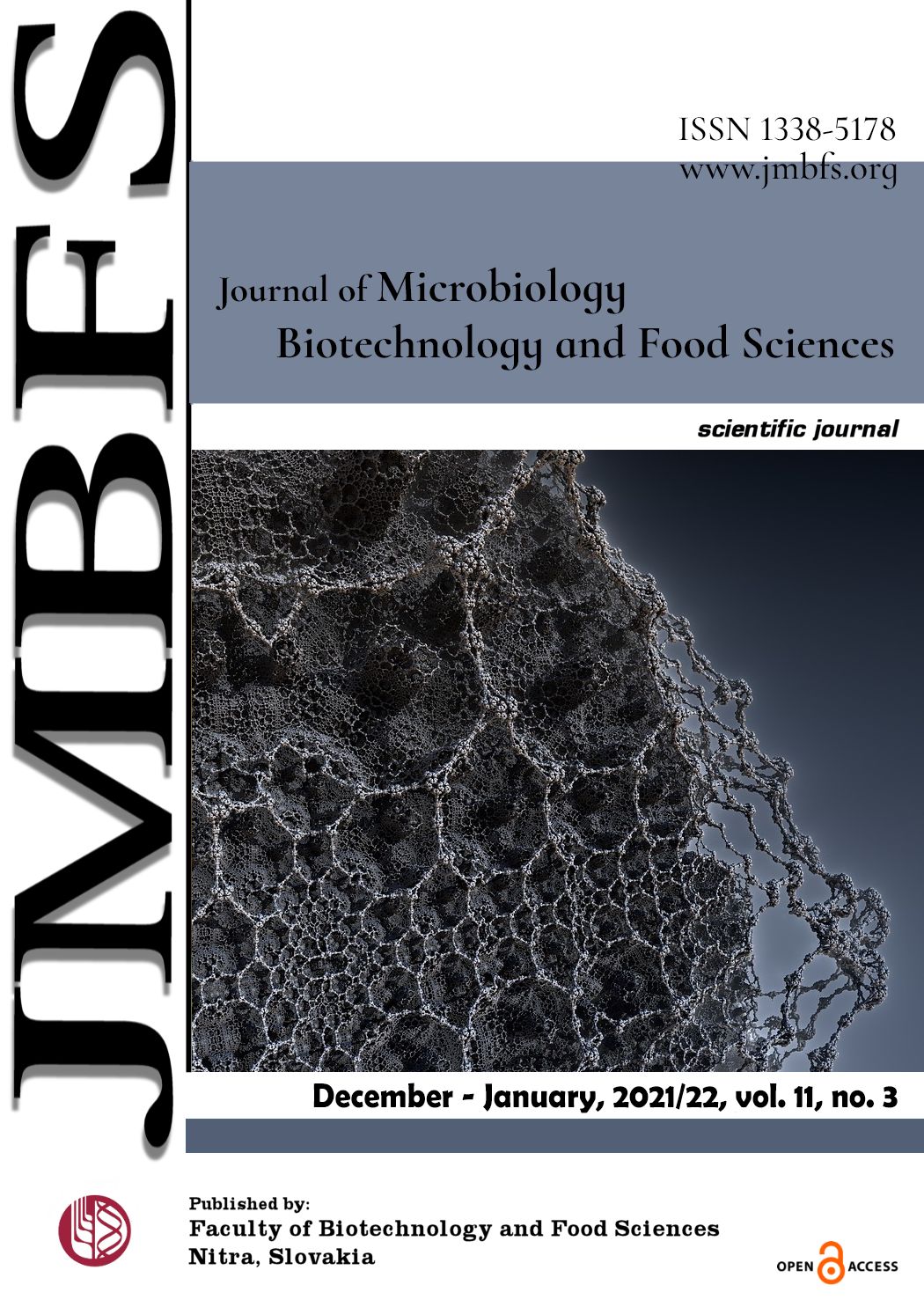SIMULTANEOUS DETERMINATION OF SYNTHETIC DYES IN GUMMY CANDY USING NOVEL MESOPOROUS MAGNETIC GRAPHENE OXIDE@ZEIN AEROGEL FOLLOWED BY A HIGH PERFORMANCE LIQUID CHROMATOGRAPHY-DIODE ARRAY DETECTOR
DOI:
https://doi.org/10.15414/jmbfs.3785Keywords:
Aerogel, Magnetic micro dispersive solid phase extraction, Zein, Food additive, MesoporousAbstract
The present work aimed to determine colorants used as food additives to confirm the gummy candy products authentication using a newly designed adsorbent in magnetic dispersive solid phase extraction. Nowadays, many kinds of synthetic dyes are widely added to food products and should be strictly monitored and regulated like other food additives. A mesoporous aerogel magnetic graphene oxide@zein adsorbent was prepared in a template-free and facile self-assembling manner for magnetic dispersive solid phase extraction extraction of 8 frequently used synthetic dyes in gummy candy samples. The adsorbent was designed and successfully characterized by scanning electron microscopy, Fourier transform infrared spectroscopy, vibrating-sample magnetometry, and Brunauer–Emmett–Teller analysis. The isotherm parameters were calculated, and the amount of colorant was determined using high performance chromatography. The proposed method was validated according to the FDA guidelines over the concentration range of 0.05-50 µg/mL. The maximum adsorption capacities of the adsorbent for Tartrazine, Quinoline Yellow, Ponceau 4R, Sunset Yellow, Allura Red, Carmoisine, Indigo Carmine, and Brilliant Blue FCF were 43.3, 43.2, 26.9, 37.8, 38.3, 74.5, 28.3, and 19.9 mg g-1, respectively. Limits of detection (LODs) were from 5 to 20 ng/mL. Inter- and intra-day precisions and accuracies were within 10%. The developed method was proved specific to determine synthetic colorants in gummy candy samples and can be easily used in food quality control laboratories.
Downloads
Downloads
Published
How to Cite
Issue
Section
License
Copyright (c) 2021 Samin Hamidi, Mahboob Nemati, Farzaneh Lotfipour

This work is licensed under a Creative Commons Attribution 4.0 International License.
All papers published in the Journal of Microbiology, Biotechnology and Food Sciences are published under a CC-BY licence (CC-BY 4.0). Published materials can be shared (copy and redistribute the material in any medium or format) and adapted (remix, transform, and build upon the material for any purpose, even commercially) with specifying the author(s).





